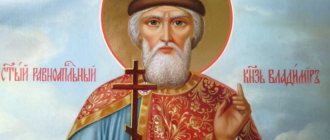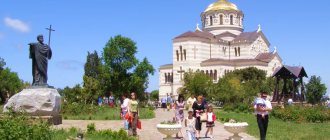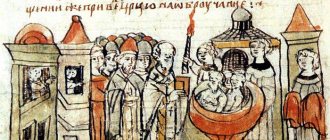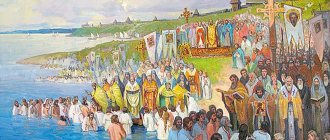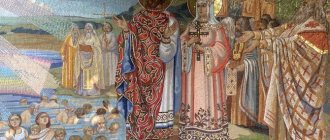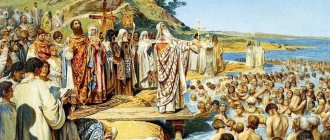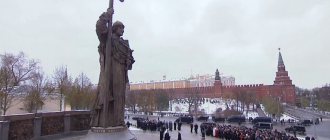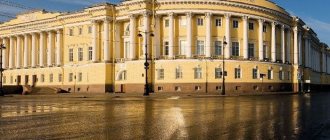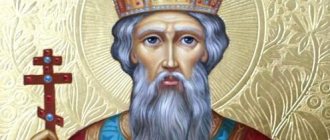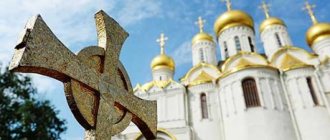Contrary to the prevailing idea that the Slavic culture is one of the youngest, archaeologists find
There is more and more evidence to the contrary. Every year there is more and more evidence that the Slavs are an ancient people, with their own unique culture and traditions, which are now being willingly revived by the younger generation.
It is a mistake to believe that the culture of Rus' appeared only with the adoption of Christianity. Our original culture dates back thousands of years, and our cults are being carefully revived. Modern man became more interested in his native culture until the adoption of Christianity. And for good reason. Slavic culture gives us many answers to existing questions.
Economy of the Slavs
Despite the fact that not enough attention was paid to archaeological excavations from times before Christianity, it is worth noting that the economy was booming on the eve of the baptism. Thus, the form of land development for cultivation has changed. Instead of burning forests, already plowed fields began to be used. Animals have already been used to cultivate land depending on the areas. The main crops grown were wheat, millet, barley, and rye.
Livestock farming developed. Due to the development and improvement of agriculture and animal husbandry, the need arose for more advanced tools. Thus, technologies for the extraction of metals, their smelting and the manufacture of tools and weapons began to change. Pottery making was actively developing. Due to the need to store food, new forms of utensils were created. Later, the potter's wheel began to be used, and this led to an increase in the quantity and quality of manufactured dishes. In addition, potters made bricks and tiles, which were later used in construction.
Crafts, livestock breeding and agriculture among the Slavs actively developed, which had a beneficial effect on domestic trade, and subsequently on foreign trade.
The economy of the Slavs of the pre-Christian period brought stability to every inhabitant. Each person was engaged in an activity that benefited not only his family, but also society as a whole.
Controversy about the “Book of Veles”
In the 1950s, the text of the Veles Book (Vlesknigi) began to be published in the pages of the small-circulation emigrant publication “Firebird” in the United States. The publishers (Alexander Kurenkov and Yuri Mirolyubov) claimed that it was an ancient pagan manuscript miraculously saved from Russia, carved on wooden tablets. “Vleskniga” told about the previously unknown history of the ancestors of the Russian people, spanning the time from some immemorial antiquity to the chronicles of Askold and Dir. She introduced the history of the ancient Rus into the circle of civilized peoples of the ancient world: Assyrians, Greeks, Romans.
On the basis of “Vleskniga”, the emigre alternative historian Sergei Paramonov (Lesnoy) built his concept of the hidden history of Rus', who published the book “Rus, Where Are You From?” in 1964 in Canada. But almost all high-status experts both abroad and in the USSR agreed that “Vleskniga” is a fiction, most likely by the publishers themselves.
The public was not shown the original tablets on which the “Vleskniga” was carved. Linguists have shown that the language of the “Vleskniga” is full of neologisms that appeared in Slavic languages no earlier than the 12th-13th centuries, while the document supposedly dates back to the 9th century. Finally, the “history” itself presented there caused bewilderment with its vagueness. It boiled down mainly to the migration of Russians back and forth under the pressure of some enemies.
Despite this, even in our time there are supporters of the authenticity of the “Vleskniga”. They give the example of “The Tale of Igor’s Campaign,” the original of which is also lost. However, most researchers consider this source to be real (there is also an opinion that it is a fake, but it is marginal in science). It is impossible, they further object, to verify the authenticity of the language of the 9th century on the basis of sources of a later time and their ideas about what this language should have been. Finally, one of the arguments of opponents of the “Vleskniga” has recently fallen away - that there were no wooden books in Rus'. Just such a book (albeit with Christian content) was found during excavations in Novgorod in 2000. It dates back to the end of the 10th century.
Slavic culture
Along with the economy, the culture of the Slavs also actively developed. Skilled craftsmen with a subtle sense of beauty designed their products, creating subtle forms and applying ornaments. The clothes were decorated with fine embroidery, the motifs of which were taken from nature.
There is an assumption that the Slavs had painting. Despite the fact that there is no preserved material to support this theory, many historians and cultural experts believe that only thanks to the painting we have, we were able to appreciate and develop the art of frescoes and mosaics that were brought by Christianity.
Theatrical art was actively developing, mainly represented by buffoons. Traveling actors entertaining people at fairs were loved by the Slavic public. In addition, many Slavic rituals had their own “theatrical” form, which was very strictly observed.
Folklore flourished the most. The epics and tales, fairy tales and legends that were then told by traveling storytellers have still been preserved. Walking from one settlement to another, they told stories, sang, but also listened. Thus accumulating the wealth of Russian folk art, which has survived to our times.
The active development of social interaction led to the development of writing. It appeared due to the needs of the state for documentary relations, recording crops, the number of livestock, as well as descriptions of historical events. Also, writing was actively used for artistic writing, as well as recording folk art.
Rus' before baptism
Hundreds of years before Epiphany in Rus', like other Slavs, the level of agricultural culture was high. In the forest-steppe zone of the Middle Dnieper region, back in the first half of the 1st millennium AD. our ancestors grew bread not only for themselves, but also for sale in large quantities to the countries of the ancient world. And in the forest zone, the settlement of the ancient Slavs successfully engaged in agriculture.
Academician B.A. Rybakov wrote about this as follows: “It would be extremely imprudent to sharply distinguish between forest and forest-steppe zones in relation to their economic capabilities during the period of maturation of Slavic statehood. There was a difference... but this difference was more quantitative than qualitative. The same types of economic activity were then possible both in the forest-steppe and in the more northern zone of deciduous forests... The volume of the harvest was different, and the amount of labor spent by the peasant on plowing open land or clearing land from under a century-old forest was different.” At that time, cultivated land plots were used repeatedly. They were processed first with a plow and then with a wooden plow (“ralo”). In the south, oxen were harnessed to the plow and ralo, and horses were harnessed to the plow in the north. To ensure high yields, two-field and three-field crop rotation systems were used. Many cereal crops were cultivated - soft and durum wheat, rye, millet, barley. Legumes were sown, fibrous hemp and flax were cultivated, and turnips, cabbage, etc. were grown. Livestock farming also developed very successfully. It was an intensive sector of the economy. Thanks to developed livestock farming, farmers were provided with draft animals, warriors with war horses, and artisans with hides for subsequent processing. They were used to make clothes, shoes, saddles, military armor, etc. The population was provided with meat and dairy food. They raised not only horses and cattle, but also pigs and sheep. In addition, they also kept goats. This means there was meat, milk and wool. The fundamental work “The History of Culture of Ancient Rus'” states: “In the 9th – 10th centuries, agricultural technology and the composition of cultivated plants, with few exceptions, acquired... a character characteristic of the later times of the 11th – 13th centuries... All types of livestock were familiar to the Slavic tribes since ancient times, and in this respect Kievan Rus did not bring anything new.” The high level of production ensured the division of labor and the expansion of exchange both between tribes and within each tribe. Based on the analysis of a large amount of factual material (and above all, objects discovered during archaeological excavations), scientists have proven that before Epiphany there was a high level of material culture in Rus'. Agricultural implements were gradually improved. The plow was replaced by a plow with an iron share and a knife for ripping up the turf (“chereslo”). A sickle, a scythe, etc. were used. Craftsmen: blacksmiths, potters, gunsmiths, carpenters, and jewelers used a variety of tools. In Ancient Rus', according to researchers, there were more than forty craft specialties. In modern terms, the mining and manufacturing industries successfully developed in Ancient Rus'. Metal mining technology was rapidly improving. Metal processing also developed at the same time. In the book “Eastern Slavs” V.V. Sedov, based on an analysis of enormous archaeological material, writes: “The iron-working craft of the Eastern Slavs on the eve of the formation of the Old Russian state was at a fairly high stage of development.” At this time, our ancestors knew several ways to produce high-quality steel. Both weapons and various tools were made from steel. Blacksmithing was at a very high level. They had a large selection of tools at their disposal. The purpose and form of many of them have remained unchanged to this day. Russian blacksmiths were famous throughout Europe. It is well known how highly valued were the locks made by Russian blacksmiths (“Russian castles”). In the Old Russian state they produced good weapons: swords, battle axes, arrows, quivers, chain mail, shields, helmets, saddles, harnesses for war horses. The weapons were made to be reliable, high-quality, convenient and appropriately designed. Many types of weapons that were made for princes and noble warriors were covered with artistic patterns and decorated with jewelry. In Rus', a variety of pottery was made not only for cooking food, storing food (grain, honey, wine, etc.), but also for feasting. The potter's wheel was widely used. Potters made not only dishes, but also bricks, tiles, decorative tiles, and other building materials that were made from baked clay. The main ornamental and building material in Rus' has always been wood. Carpenters (“woodmakers”) have always been respected in Rus'. V.V. Sedov wrote: “Very numerous materials indicate that in the Eastern Slavs not in the second half of the 1st millennium AD. were familiar with many types of wood processing.” Everything was built from wood - dwellings, utility buildings, public buildings, fortifications, etc. Temples to the Vedic gods were also built from wood. By the way, the methods of building these temples and the experience were subsequently transferred to Christian churches. Historians of Russian architecture in the book “History of Russian Architecture” write this: “The basis for the construction of a Slavic pagan temple was, as one might assume, a cage, sometimes of a tower-like shape. It can also be assumed that the largest pagan temples consisted of several wooden frames connected to each other, and that under their influence the first wooden cathedrals were built, like Sophia of Novgorod in 989, with thirteen domes, as the chronicle says, that is, probably with thirteen domes.” . The construction of buildings and temples made of stone was just beginning to develop at that time. In subsequent centuries, genuine architectural masterpieces made of stone appeared. Academician B.A. Rybakov in his book “Culture of Ancient Rus'” writes: “Having been prepared during the pagan period for the construction of fortresses, towers, palaces, wooden pagan temples, Russian architects with amazing speed mastered the new Byzantine technique of brick construction and decorated the largest Russian cities with magnificent monumental structures.” . Russian jewelers were among the best in Europe. Jewelry craftsmen already at that time mastered the technique of gold, silver and bronze casting using wax models, as well as in stone molds. They used stamping on dies, forging and embossing, as well as soldering, gilding, niello, etc. Master jewelers of that time knew the secret of making various enamels. Until the mid-10th century, craftsmen used the “champion enamel” technology. In this case, specially made recesses on jewelry were filled with enamel. Subsequently, more complex technology for applying enamel to jewelry began to be used. This technology was called septal. Its essence was that first thin partitions were soldered onto the smooth surface of the product. Multi-color enamel (enamel) was applied between these partitions. The technology of making items using the niello technique was widely used by jewelers. Gold or silver grain balls were soldered onto the plates. Filigree or filigree technology was also used. Its essence lies in the use of twisted gold or silver wire. We cannot help but quote the words of Academician B.A. Rybakova: “In terms of technique, the products of city craftsmen, especially those who served the most distinguished customers in the princely palaces, were not inferior to examples of the most advanced world art of that time - the art of Byzantium and the Middle East. Engravers could produce excellent reliefs on silver, and foundries cast complex, ingenious products. Masters of gold and silversmiths, in search of the best play of light, shaded the silver with niello and gold, and sometimes covered the smooth silver surface of the kolta (a hollow gold or silver pendant that decorated a gold headdress) with thousands (!) of microscopic rings and soldered each ring (!) a tiny grain of silver.” Crafts in Rus' were very widespread, almost everywhere. Thus, the potter served 3–4 settlements, and the blacksmith’s products were distributed in an area of 10–20 kilometers. Historians testify that on the territory of the Principality of Polotsk (very small) there were about 250 forges. Craftsmen settled mostly in cities, constituting one of the most numerous groups of the urban population. The number of cities in Rus' grew. According to chronicles, in the 9th – 10th centuries there were at least 25 cities in Rus', and in the 11th century their number already exceeded 90. In the Scandinavian sagas, Ancient Rus' was called the “country of cities” (“Gardarik”). Not only artisans, but also traders were concentrated in the cities. Rus' traded with many other countries. Russian warrior-merchants in many cities of Byzantium enjoyed some benefits. For this, Byzantine merchants had the right to trade freely throughout Rus'. Rus' traded with the countries of Europe and the Arab world. They traded handicrafts, skins, furs, wax, etc. They imported a variety of fabrics, jewelry, weapons, etc. There was money circulation in Rus' - gold and silver coins. Silver bars, which were called hryvnias, were also used in circulation. The statehood of Ancient Rus' was formed long before the Baptism of Rus'. Back in the 6th century AD. The Eastern Slavs had an institution of tribal leaders. Academician B.A. Rybakov wrote: “The 6th century was marked by three groups of phenomena that determined the new direction of Slavic life. Firstly, thanks to the development of productive forces, the clan system had by this time reached its highest development among most tribes and was already giving rise to contradictions that prepared the way for the emergence of class relations; secondly, for the strengthening tribal squads, as a result of the great migration of peoples, the possibility of long trips to rich countries and even settlements in them opened up. The third feature of this era is the abundance of nomadic hordes in the steppes, warlike and poorly governed, posing a constant and formidable danger to all Slavic tribes of the forest-steppe. The interaction of these three heterogeneous phenomena, associated with both internal development and the external situation, led to a very important result - individual scattered Slavic tribes, of which there were probably about one and a half hundred in Eastern Europe, began to unite into large unions.” Collective tribal property was replaced by family and personal property. Society quickly began to divide into rich and poor. Instead of tribal communities, territorial communities arose in which the population had different incomes. Rich families subjugated the ruined community members. They became dependent people. This is how boyar courtyards and estates arose. They united neighboring communities around themselves. All of them together made up the estate. Between the estates, “lands” were also formed and arose - larger associations (tribes). Here power belonged to the nobility, who nominated princes of individual “lands” from among themselves. Temporary alliances were created between the principalities. In The Tale of Bygone Years such unions are called “princedoms.” For example, there was a princely union of Polyans, Drevlyans, Dregovichs, Slavens, Polochans, etc. According to B.A. Rybakov, these reigns were “the political form of the era of military democracy, that is, that transitional period that connects the last stages of the development of the primitive communal system with the first stages of the new class system.” This was “a natural process of progressive development of the institutions of the tribal system, which to a certain extent prepared the future feudal state.” This in itself was “a significant step in the development of the Slavic tribal society, which brought the birth of statehood closer.” However, at that time there were no feudal relations. Professor V.V. Mavrodin characterizes this process of the emergence of ancient Russian statehood in the following way: “Tribal principalities were the embryonic form of statehood of Ancient Rus', at a time when the bulk of the rural population had not yet lost their communal property and had not become dependent on the feudal lord.” The next stage in the process of creating statehood was the formation of “unions of unions” (super-unions). This was necessary to organize protection against external enemies. This was no less important for organizing offensive actions. The union of unions was headed by the prince. He had a permanent military unit - the princely squad. It consisted of professional warriors. Squads began to form in the 6th – 7th centuries. In the 9th century they became the main instrument of princely power. Thus, in the 8th – 9th centuries such super-unions of the Eastern Slavs were the Principality of Kiev and the Principality of Novgorod. The first Kyiv princes were Askold and Dir. It was under them that the Principality of Kiev freed itself from dependence on the Khazar Kaganate. The Kyiv prince made campaigns in Byzantium. The Novgorodians were united into the Principality of Rurik. Rurik's successor Oleg captured Kyiv, killing Askold and Dir. In 882, he moved the center of the united state to Kyiv. Subsequently, other East Slavic tribes were subordinated to Kyiv - the Drevlyans, Northerners, Rodomiches. Oleg conquered them. Prince Igor conquered the Ulichs and Tiverts, and Svyatoslav and Vladimir conquered the Vyatichi. This completed the formation of the Old Russian state. The princes continued to expand the territory of the state, for which they carried out campaigns against the Khazars, Kama and Danube Bulgarians, as well as the North Caucasus. Kievan Rus was gaining strength, and its neighbors felt it well. Thanks to Oleg’s successful campaign in 911, an agreement was concluded with Byzantium, the terms of which were beneficial to Rus'. Prince Igor continued his campaigns against Byzantium. Although his military successes were more modest, the agreement concluded in 944 with Byzantium provided for the establishment of broad trade relations between the states. Igor's son Svyatoslav continued these campaigns. He was a talented commander. He even intended to move the capital of his state from Kyiv closer to the Byzantine border (to Danube Bulgaria). However, battle luck changed Svyatoslav. His army was defeated by the Byzantine emperor. He was forced to sign peace and pledged to no longer oppose Byzantium. Returning home, Svyatoslav with a small part of his squad was waylaid by the Pechenegs and killed. Historians believe that Byzantium had a hand in this, concerned about the actions of its troubled neighbor. Under Svyatoslav's son Vladimir, Byzantium was forced to recognize its parity with Russia. Emperor Vasily II married his sister Anna to Vladimir. Long before Epiphany, Rus' had a high spiritual culture. The “History of the Culture of Ancient Rus'” says: “The richest factual material testifies to the height and independence of ancient Russian culture and its rapid progress.” The “History of Old Russian Art” says: “Its origins go back to the previous artistic culture of the East Slavic tribes... By the time of the formation of the Old Russian state, in the second half of the 9th century, the Eastern Slavs had already developed deep, ramified artistic traditions. Therefore, from the first steps, the masters of ancient Russian art were able to create outstanding works.”
Academician D.S. Likhachev wrote: “Russian culture is much more than a thousand years old. She is the same age as the Russian people, the Ukrainian and Belarusian people. More than a thousand years of Russian folk art, Russian writing, literature, painting, architecture, sculpture, music.” B.A. Rybakov wrote this: “The origins of Russian folk art go back thousands of years. By the time of the adoption of Christianity, Russian art was at a fairly high stage of development.” Labor and household items, the high level of manufacturing of weapons and military armor, and the elegance of jewelry testify to how deeply our ancestors understood the beauty of the world and its harmony. B.A. Rybakov concludes that the subjects and compositional solutions of folk embroidery, which amaze with aesthetic perfection, were developed by the people thousands of years ago. The tools of women's labor - spinning wheels - were decorated with great taste. Ornaments and patterns were applied to them, which were highly artistic. Ancient Russian jewelers had a keen understanding of beauty. In Ancient Rus', long before its Christianization, there was sculpture, products of wood and stone carvers who made statues of the Vedic gods: Perun, Khors, Veles, and figurines of various gods - patrons of the family hearth. On the banks of the Bush River, which flows into the Dnieper, one of the complex sculptural compositions was discovered: a bas-relief image of a man praying in front of a sacred tree. A rooster is also depicted sitting on a tree. This image is found on a cave stone. The “History of Old Russian Art” says: “In the folk art of pagan Rus', in the monolithic columnar, laconic volumes of wooden idols, a developed sense of large spatial form was already expressed.” It also says: “In the 9th century, a powerful Old Russian state emerged. The architecture of this state was a further development of the architecture of the Eastern Slavs of the previous historical period on a new socio-economic basis and on the basis of a new stage in the development of their culture... Only the large culture of the Eastern Slavs accumulated over centuries makes clear the brilliant development of ancient Russian stone architecture of the 10th - 11th centuries - the heyday of Kievan Rus " Folk culture was at a high level. Folk household rituals were filled with a variety of aesthetic content. Many of these rituals included theatrical performances. The professional art of traveling actors - buffoons - was widespread. They enjoyed great success and support from the common people. Of course, buffoons existed long before the Baptism of Rus'. The oral folk art of Ancient Rus' was very diverse. These include songs on everyday, ritual and historical themes, tales and epics, as well as proverbs and sayings. From time immemorial, guslar storytellers have been famous in Rus', in particular the legendary Bayan, sung in “The Tale of Igor’s Campaign.” Their songs glorified the people's heroes, defenders of the fatherland. B.A. Rybakov wrote in the book “Kievan Rus and the Russian Principalities”: “The author of “The Tale of Igor’s Regiment” also knew some songs about campaigns, which could reflect the events of the 6th century, when significant masses of Slavs victoriously fought with Byzantium, and also knew earlier songs-lamentations about the tragic fate of the Slavic prince of the 4th century Bus, captured in a battle with the Goths and painfully killed by them.” Academician B.D. Grekov in his book “Kievan Rus” lamented: “If they had not started collecting and recording the Russian epic so late, we would have had an incomparably greater wealth of these vivid indicators of the deep patriotism of the masses, their direct interest in their history, the ability to make a correct assessment of individuals and events." The chronicles, in particular the Tale of Bygone Years, use folk songs and epics that were composed many centuries earlier. These are, for example, the tales of the brothers Kiy, Shchek, Khoriv and their sister Lybid; about Olga’s revenge on the Drevlyans who killed her husband, Prince Igor; about the feasts of the Kyiv prince Vladimir, as well as about his taking the Polotsk princess Rogneda as his wife and many others. IN. Klyuchevsky in his book “The Course of Russian History” called these tales “the people's Kyiv saga.” Songs occupied a very important place in the life of our ancestors. Songs were sung at weddings, feasts and funeral feasts. The songwriting of our ancestors is not only highly artistic, but also highly moral. Epics occupy a special place. There are many of them, and they all paint the Russian person as brave, worthy, honest and sympathetic. Various spells and fortune telling were widespread. Sometimes spells were included in interstate treaties. Thus, the text of the treaty of 944 between Byzantium and Russia contains the following text: “Those of the parties to the treaty who are not baptized, may not have help from both God and Perun, may they not be protected by their own shields, and may they perish from their swords, from their arrows and from their other weapons, and may they be slaves throughout their afterlife.” Much of our cultural and spiritual heritage was destroyed by the Orthodox Church. Academician B.A. Rybakov wrote with bitterness: “The medieval church, which jealously destroyed the apocrypha and works in which pagan gods were mentioned, probably had a hand in the destruction of manuscripts like “The Tale of Igor’s Campaign,” where the church is mentioned in passing, and the entire poem is full of pagan deities.” . The assertion that Rus' did not have its own written language does not stand up to criticism. Already in our time, books written in Rus' many centuries before Cyril and Methodius, who supposedly gave us writing, are being printed one after another. The Orthodox Church still spreads this myth. Thus, in 1980, Archpriest I. Sorokin argued that from the church “Russian people received writing, education and were grafted into the centuries-old Christian culture.” Church ministers repeated this statement more than once. Archpriest A. Egorov claims that “the first Russian writing originated in monasteries.” There is no doubt that the Russians had a written language long before Cyril and Methodius. We are talking about runic writing. In the legend “On Writings” it is mentioned that the Russians used some “traits” and “cuts” with the help of which they “read and told fortunes.” In the “Pannonian Life of Constantine the Philosopher” (Cyril) it is said that during his trip to Khazaria, around 860, he saw in Kherson the Gospel and the Psalter written in “Russian letters”. Experts believe that the text was written in Glagolitic script. This is an ancient Slavic alphabet that replaced runic writing (cuts and lines). Arab and German sources also testify to the writing of the ancient Slavs. They talk about inscriptions on stone (prophecies), about an inscription on a monument to a Russian warrior, about “Russian letters” that were sent to one of the Caucasian “kings”. The texts of agreements with Byzantium have been preserved. Under Prince Oleg, there were written wills (it is said: “Let the one to whom the dying person wrote to inherit his property take what was bequeathed to him”). Prince Igor gave accompanying letters to merchants and ambassadors. It is said this way: “Previously, ambassadors brought gold seals, and merchants brought silver ones; Now your prince has commanded to send letters to us, the kings.” In one of the ancient Russian chronicles it is said: “And a Russian letter appeared, given by God, and Korsun was a Ruthenian, and the Philosopher Constantine learned from it, and from there he compiled and wrote books in Russian.” Professor V.V. Mavrodin writes: “There is no doubt that among the Slavs, in particular among the Eastern Slavs, Russians, writing appeared before the adoption of Christianity and its emergence is by no means connected with the Baptism of Rus'.” The baptist of the Primorsky Slavs, Otto of Bamberg, in his work “Life” convincingly showed that the Rus tribe was also called Rusyns (Rutens). Their country was called "Rusinia" (Ruthenia) or Rus'. Actually, this was Ancient Rus'. Tacitus in his work "Germania" in 98 AD. wrote that the Rugs lived on the southwestern coast of the Baltic states. Back in the 10th century AD. Rugs and Rus were identified. Thus, in German chronicles, Princess Olga was called “regina, rugorum” (but not “regina, rusorum”). In sources for 282 AD. contains a mention of the leader Russ. So, in the book of Prokop Sloboda it is said: “I know well what is known to many, but not everyone, as once from this Krapinsky area, according to the calculation of Peter Codicilius and many others, in 278, a very noble nobleman Czech left with his brothers Lech and Rus , as well as with all their friends and family, due to the fact that they could no longer endure the great attacks and oppression that the Romans did to them, and especially the commander of the Roman troops, Aurelius, who guarded Illyria with an armed hand and oppressed his family so much, that Czech and his people raised an uprising against him and removed him from the ranks of the living.” And as a result, fearing the mighty hand of the Romans, he left Krapina, his fatherland. For 14 whole years he served with Salmanin, with the son of Tsirzipan, at that time the ruler and future leader of the Bohemian people... And only after the death of Salmanin's son, called Turk, who after his father took over the government of the people and died in battle against Emperor Constantine, the Czech accepted assume the reign." Of course, this does not mean that the Czech Republic began from Czech, Poland from Lech, and Rus' from Russ. Experts believe that these brother leaders led already existing tribes that settled in a small area at the junction of the Czech Republic, Poland and Transcarpathian Rus. Only later these tribes separated. Karamzin wrote: “Nikifor Grigora, a writer of the 11th century, assures that even at the court of Constantine the Great, a Russian prince was a steward.” Karamzin also reports that “another city in Thrace was called Russion.” In the first centuries AD, on the northern bank of the Danube there was a population (“dava”) of Rusidava. Byzantine writers were well aware of the legend of the three brothers who led their peoples from the yoke of Taran. One of these brothers was Rus. Karamzin wrote: “some Byzantine writers also derived the Rosses from Ross, some famous man who supposedly delivered his fellow citizens from the yoke of the Tarans.” Patriarch Proclus (434 – 447) spoke about the “growing” people, who, under the leadership of the Huns, defeated Byzantium. In 477, the Rusyns, led by Odoacer, captured the city of Yuvava and killed Saint Maximus and his disciples. Now it is the city of Salzburg in Austria. On the stone slab the following is written in Latin: “The Years of the Lord 477, Odoacer, leader of the Rusyns (Ruteni), Geppidae, Goths, Ungars and Heruli, raging against the Church of God, blessed Maximus with his 50 comrades, fleeing in this cave, because of the confession faith, were thrown from a cliff, and the province of Noriki was devastated by sword and fire.” This happened at a time when Rome fell under the blows of the “barbarians”. Jordan reported in his Roman that Odoacer was a Rusyn. By the way, the Ukrainian Cossacks considered Odoacer and his Rusyns their ancestors. It was not without reason that in 1648, Hetman Bohdan Khmelnytsky appealed to the Cossacks to follow the example of their glorious ancestors, who, under the leadership of Odoacer, ruled Rome for 14 years. No wonder at Khmelnitsky’s funeral the general clerk of the Zaporozhye Cossacks said: “Dear leader! Ancient Russian Odonatzer! A Syrian chronicle for the year 555 says: “The people neighboring them (the Amazons) are the Khros, men with huge limbs, who have no weapons and who cannot be carried by horses because of their limbs.” In the “Georgian Parchment Manuscript” of 1042, about the siege of Constantinople by the Russians in 626, it is said: “The siege and assault of the great and holy city of Constantinople by the Scythians, who are Russians.” The Byzantine emperor Heraclius defeated the army of the Persian king Khosroes in 625. It further says: “His (the Persian king’s) commander-in-chief Sarvaron persuaded the “Russian Khagan” to make a general attack on Constantinople. The latter accepted this offer. As you know, this Russian Khagan, even under Mauritius, attacked the empire, once captured 12,000 Greeks and then demanded 1 drachma per person.” The “Georgian Manuscript” also says the following: “In 622, Heraclius, for a large sum of money, persuaded the Scythians, who are Russian, not to disturb the empire, and then went to take revenge on Khosroes.” True, after 4 years the Russians, together with the Persians, attacked Constantinople. In the Georgian manuscript, the Russian siege of Constantinople in 626 is described as follows: “The Russian Khagan put his soldiers on boats that were hollowed out of solid trees and which were called “momoksilo” (single-tree). The Khagan landed at Constantinople and besieged it from land and sea. His warriors were powerful and very skillful. There were so many of them that there were 10 Russians per Tsargrad resident. Rams and siege engines began to operate. Hagan demanded to surrender, to abandon false faith in Christ. However, his threats had no effect, but only raised the spirit of the townspeople. A terrible dump occurred near the city walls. The freedom of Constantinople was already hanging by a thread. Meanwhile, Patriarch Sergius sent a huge sum of money to the Hagan. The gift was accepted, but freedom was promised only to those who, dressed as beggars, leave the city and go wherever they want... Heraclius sent 12,000 soldiers from the east, and they did not allow the city to fall.” The ruler of Derbent, Shahriars, testified about the Rus in the Caspian in 644. The Arab writer At-Tabari says that the ruler declared the following: “I am between two enemies: one is the Khazars, and the other is the Rus, who are enemies of the whole world, especially the Arabs, and no one except the local people can fight with them.” who doesn't know how. Instead of us paying tribute, we will fight the Russians ourselves and with our own weapons. And we will hold them back so that they do not leave their country.” Around 775, the Russian prince Bravlin attacked the southern coast of Crimea. In "The Life of St. Stephen of Sourozh” it is said: “Few years have passed since the death of the saint, the great Russian army from Novgorod, Prince Bravlin, is very strong.” The Russians captured the entire coastal strip of Crimea between Korsun and Kerch, and also took Surozh (Sudak). Here, Novgorod refers to present-day Simferopol (Naples of the Greeks). Around 820, the Rus attacked Amastris. In "The Life of St. George of Amsterdam" it is said: "There was an invasion of the barbarians of Rus', a people, as everyone knows, extremely wild... and rude, not bearing in themselves any traces of philanthropy, brutal in morals, inhuman in deeds, revealing their bloodthirstiness by their very appearance, in nothing Another thing that is characteristic of people, not finding such pleasure as in murder, they - this destructive people both in fact and in name - having begun the destruction from Propondita and visiting the rest of the coast, finally reached the fatherland of the saint - Amastris, cutting mercilessly every gender and age.” Researcher Lesnoy comments on this as follows: “They were not some unknown people who came from somewhere, but a well-known one, who had a military force sufficient to plunder the entire Black Sea coast, belonging to one of the most powerful states in Europe at that time.” Finally, in 860, the Russians attacked Constantinople. The campaign against Constantinople was carried out as an act of revenge for the murder and enslavement for the debts of several Russians who lived and worked in Constantinople. There were no more than 8,000 Russians. But the emperor’s army and fleet were far away, and no one defended the city; it was well protected by high walls, and the Russians did not take it. Everything in the immediate and distant environs of Tsar-grad was given over to fire and sword. The Russians took revenge for the murder and enslavement of their fellow tribesmen.
Faith and religion of the Slavs
The Slavic faith was multifaceted. Unfortunately, after Christianization, little remained. The places of power of the Slavs have been practically erased from the face of the earth, information about the traditions and rituals, about the faith as such of the Slavs before baptism is carefully suppressed. But even what reaches us speaks of how great and multifaceted the religion of the Slavs was. The Slavs were very close to nature, they revered their family and ancestors. Hence the name “Rodnoverie”. This is not paganism in the generally accepted sense. The Slavs believed that the gods were the ancestors who stood at the source of the Slavic people and who had great powers. At the same time, the gods were divided according to their “directions” - agriculture, cattle breeding, military affairs. People believed in good spirits who protected and protected from bad things. If you delve deeper into the study of the Slavic gods themselves, you can see that there are no completely good and
completely evil gods, as in other pantheons. The Slavic faith is characterized by an attitude towards the gods as older relatives, ancestors who can scold, intercede, help, and simply assist.
The world of spirits that inhabited forests and lakes is as rich as the pantheon. A woman going into the forest to pick mushrooms always took with her a gift for the devil. Mermen, kikimoras, and mermaids lived in lakes, swamps, and rivers. All this led to the global ritualism of the Slavs. Each action was accompanied by a ritual that had to be performed. Be it the birth of a child, a wedding, planting a crop, harvesting a crop, welcoming the new year. The Slavs' year is divided into a huge number of holidays and special days that honor one or another god or spirit.
Unfortunately, today most of the cultural heritage of our people is irretrievably lost. What led to this is not the topic of this article. The most important thing that is worth noting is that nowadays interest in the Slavic faith and culture has begun to increase more and more. More and more people are delving into all kinds of sources in search of those grains of information that were preserved during the turbulent Christian period. More and more holidays and celebrations are beginning to be remembered and celebrated, more and more Slavic traditions are being revived.
Let them be somewhat adapted to modern times. However, these are the first signs of the revival of the great heritage of the Slavic people.
Don't go to the other extreme
Of course, one should not exaggerate the degree of development of Russian civilization before the adoption of Christianity. Fashionable stories about the mighty Great Tartary, which supposedly gave rise to the civilizations of Ancient Egypt, Greece and Rome, about the lost “Book of the Forests”, about grandiose artifacts allegedly completely destroyed by the “Christianizers” are also pseudoscientific mythology that has no basis in fact.
Russian civilization of the 9th-10th centuries was at approximately the same level of development as the civilization of neighboring Scandinavia, Poland, the Czech Republic and the like. And, of course, it is impossible to deny the fact that the adoption of Christianity significantly increased the intensity of international cultural contacts of Rus', and therefore was an additional incentive for the development of its civilization.
Source
Old Russian city
The fact that the Slavs were not at all dense forest barbarians can be judged at least by the fact that the Scandinavian sagas of the 9th century. They call Ancient Rus' Gardarika - “Land of Cities”. It is unlikely that the Scandinavians, hungry for wealth, would call a country with primitive forest settlements that name.
What do sources tell us about Slavic cities?
- According to B.D. Grekov, full-fledged cities appeared on the territory of Ancient Rus' at least in the 7th century. Moreover, there is no exact date of their foundation, and therefore such cities are called “original”: these are Novgorod, Rostov, Smolensk, Chernigov, Polotsk and, of course, Kyiv. All these cities stood on the trade river routes “from the Varangians to the Greeks,” and therefore were famous for their wealth.
- At first the city was a “shelter” - a fortified settlement with a palisade around it. During enemy raids, civilians hid here, and during times of peace, the fortifications were usually empty. However, with the advent of the regular army and, accordingly, the prince, the commander of this army, squads began to settle in the settlements. They needed not only supplies, but also weapons and clothing. So, settlements began to form near the settlements, where artisans lived.
- With the advent of private property, noble men began to have “gradas” - mansions. And it is they who ultimately become real cities. As a result, the city becomes the center of not only the political, but also the entire cultural life of the people living nearby.
So, even before the formation of the state, the Eastern Slavs already had their own (very rich!) history and created a huge layer of original culture.
